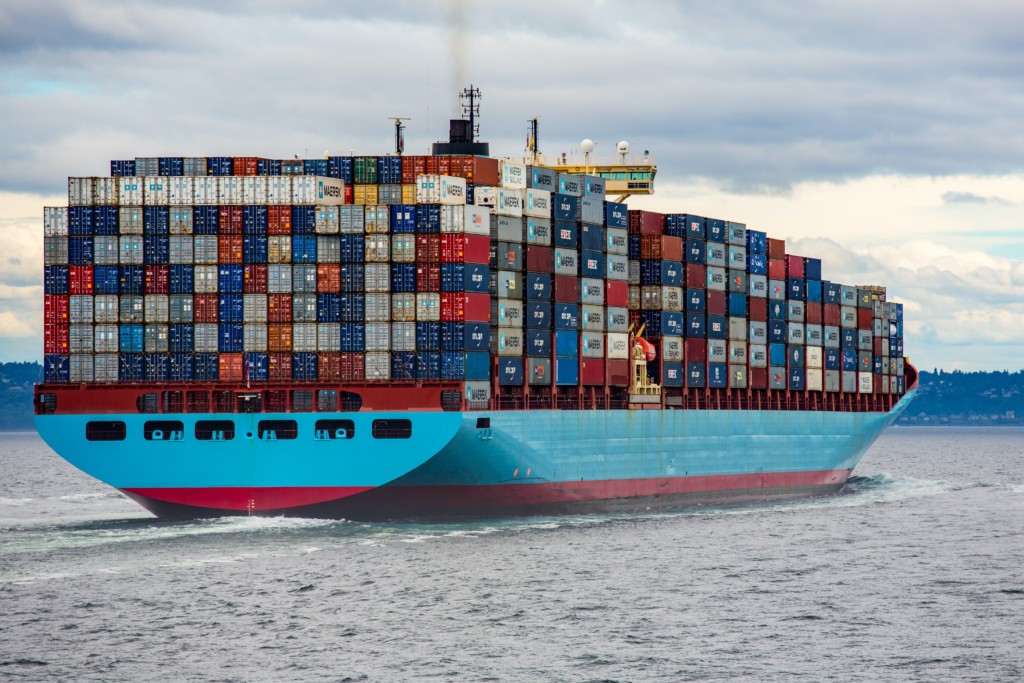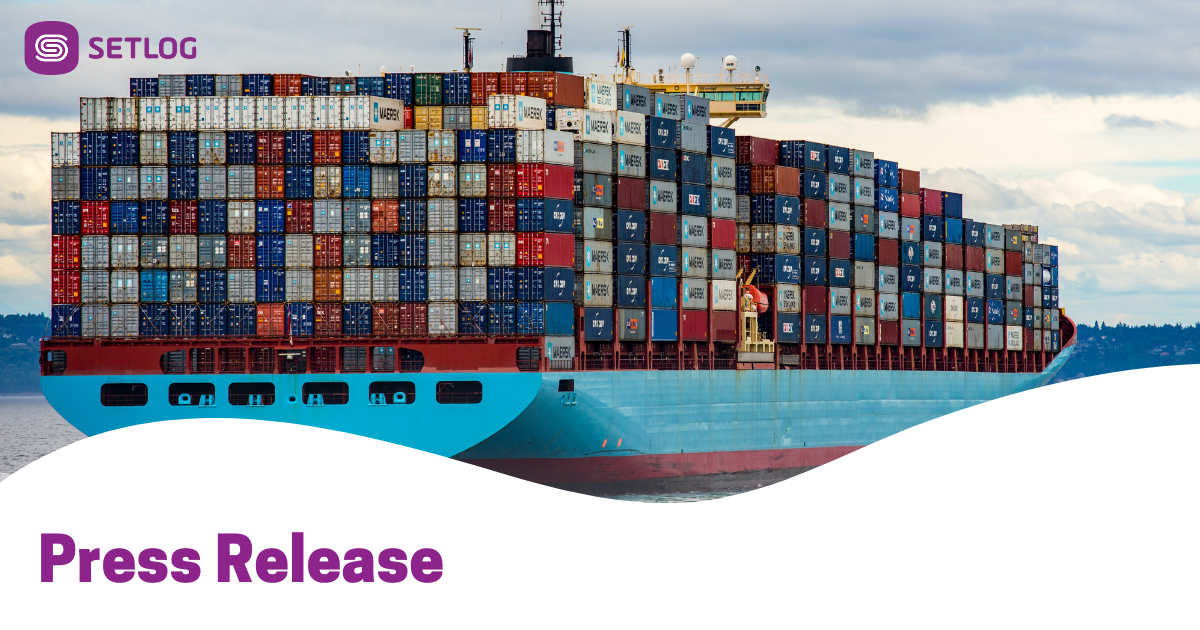• Reduction of supply backlogs may take up to six weeks.
• Experts forecast falling sea freight rates in the long term.
• Setlog publishes seven expert tips for Asian trade.

(Bochum, 02/08/2021). Capacity bottlenecks in sea freight and a lack of empty containers have caused importers of goods from Asia to suffer for months. The start of the Chinese New Year on February 12 is now exacerbating the situation even further. Because many traders replenish their stocks after Christmas or have produced new seasonal goods, the ports in China are currently experiencing high freight volumes. During the week-long state vacation to mark the New Year for the “Year of the Ox,” the economy and logistics will come to a near standstill. “Only when the holidays are over, with the subsequent clearing of backlogs after the New Year, do we expect to see an alleviation of tension in logistics and freight rates at the end of March. Until then, shippers who want to book cargo room at short notice will have to pay heavily and still run the risk of container shipments being postponed by seven to 14 days,” emphasizes Ralf Duester, board member of the Bochum-based SCM software provider Setlog.
A comparison with the previous year shows how sharply prices for container shipments from Asia have risen. Transporting a 40-foot container from China to Europe cost around 1,400 US dollars in March 2020. At the end of January 2021, the price was up to 8,000 US dollars. In some cases, surcharges had to be accepted to ensure that deliveries arrived at their destination on time, so shippers paid up to 10,000 US dollars per container.
Forwarders from Europe accused the international shipping companies of an “artificial shortage” of capacity on the China-Europe route. Statisticians calculated that shipping lines reduced capacity between China and the European North Sea ports by about 20 percent after the economic shutdown during the first lockdown period in spring. After market regulators in the EU, U.S. and China put strong pressure on ship owners, spot rates stabilized in December – at a high level. “The ocean freight market is also still in the greatest chaos since the invention of the container itself. But there is light at the end of the tunnel,” stresses Patrick Merkel, managing director of Prologue Solutions GmbH.
However, the logistics expert does not expect more empty containers to be available for transport to Europe and freight rates to fall until a few weeks from now. In his opinion, importers cannot relax just yet: “Shippers will probably still have to prepare for higher freight costs in 2021, even for contracts with longer terms,” Merkel predicts. He forsees that freight rates will also be significantly higher in the current year. Other experts are predicting up to 50 percent year-on-year.
On February 5, Setlog evaluated how strongly the lack of demand on one hand and the capacity bottlenecks on the other, affected the retail market in Europe during the Corona crisis. For this purpose, data from 100 brands using the IT company’s SCM software OSCA was analyzed. The core results are:
Between February 2020 and February 2021, a total of 20 percent fewer goods were transported than in the same period a year earlier – despite, for example, billions of face masks still being exported from China. In the same period, purchasing volumes fell by more than 25 percent, and in some cases by more than 40 percent. The capacity bottlenecks and cancellations as well as postponements of container ship departures affected the punctuality of deliveries. For example, even when the Corona pandemic subsided in the summer of 2020, delays were massive: from July to October 2020, goods ordered early, arrived at the warehouse about 16 days late on average.
Setlog CEO Duester advises companies active in Asian trade to book shipments for the long term, to examine transport alternatives, to bundle orders and to think more collaboratively in the supply chain. To this end, he has compiled seven tips for Asia-Europe trade.
Seven tips for Asia-Europe trade
- Consider alternatives: For very urgent shipments, it makes sense to switch transport modes – from ship to rail, for example. Currently, however, capacities on the New Silk Road are also scarce, so prices for rail freight from China are at a high level and a shortage of empty containers in China also exists. Compared to rail, air freight is still significantly more expensive. This is the case, for example, when shippers want to receive part of an overall shipment more quickly and then have it transported by air.
- Book early: Companies should book sea shipments as early as four to six weeks before the departure date. Important notice: The quantities of goods ordered from suppliers should be as accurate as possible. For this, good production planning, exact volume calculation based on historical data, carton specifications and/or automatic loading planning using software tools are advisable.
- Bundle orders: Companies should use tools to schedule containers so that different orders from various suppliers are bundled into one full container load (buyers’ consolidation). This saves unit costs and capacity.
- Rethink bills of lading: If the container volume is high, goods should be divided among several bills of lading. In case of rollover, this will prevent all containers from being loaded onto a later ship. Ship owners only ever transport complete shipments based on the bill of lading.
- Increase speed: Because shipments from Asia to Europe can only be accelerated by a (costly) change in transport mode, levers should be used to optimize goods receiving, warehouse turnaround times and the outbound supply chain to the end customer using modern technologies.
- Improve the flow of information: A SCM tool helps all partners bring transparency to the supply chain and establish a cross-company information flow. This allows long planned orders to be divided into urgent and less urgent shipments at short notice, or orders to be split – and all parties involved are informed about this in real time.
- Collaborative thinking: In the purchasing of the future, collaborative thinking by all partners involved in the chain will shape actions. This optimizes procurement locally, nationally and globally. With the right information from forecasting tools and demand planning data, quantities and capacities are calculated. Thanks to an optimized flow of information and cross-company working, companies reduce times and costs and thus secure their margins.
About Chinese New Year
Chinese New Year is considered the most important traditional Chinese holiday and is one of the Asian Lunar New Years. In 2021, the “Year of the Ox” starts in China on February 12. On this day, the week-long state vacations begin. During these days, virtually all offices and factories, as well as ports, are closed. Most people visit their families, some of whom live far away from the production sites. The economy is severely restricted during this time. Even after the state vacations, business does not start immediately. This is because many workers look for a new job during the vacation period – or return to their old jobs with a delay.
Contakt
Nora Breuker, Digital Marketing Strategist
Setlog GmbH, Alleestrasse 80, 44793 Bochum, Germany T +49 234 720 285 78, n.breuker@setlog.com, setlog.com
About Setlog
Setlog Holding is a provider of customized supply chain management (SCM) solutions. Its core product is the cloud-based SCM software OSCA®, which is used by over 150 brands in the apparel, electronics, food, consumer goods and hardware sectors. With the help of OSCA®, companies connect to their customers, suppliers and service providers to optimally coordinate their supply chain, accelerate processes and efficiently manage supply chains.
Setlog GmbH is a wholly owned subsidiary of Setlog Holding AG. The company was founded in 2001 and is today one of the leading providers of SCM software with over 40,000 users in 92 countries. The software house employs 60 people at its locations in Bochum (headquarters), Cologne and New York. www.setlog.com
